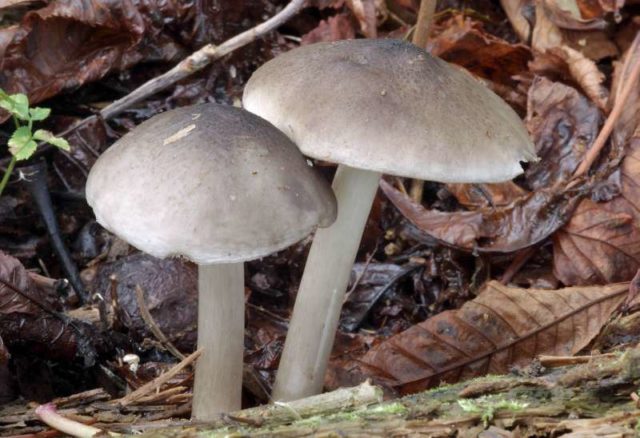Content
Pluteus willow is a conditionally edible mushroom representative of the Pluteaceae family. The mushroom grows in cities with temperate climates and begins to bear fruit in early spring, lasting until the first frost. Since the species is very similar to a toadstool, before mushroom hunting you need to study the external description, view photos and videos.
Description of the willow spittle
Acquaintance with the species must begin with an external description. Since during mushroom picking a conditionally edible specimen can easily be confused with a poisonous or inedible forest dweller, you need to have an idea of what it looks like and where it grows.
Description of the cap
At a young age, the cap of Pluteia willow is hemispherical or bell-shaped. With age, it straightens and takes on the shape of a saucer, leaving a small hill in the center. The size is small, up to 10 cm. The pulp is dense, fragile at the edges, after rain it swells and increases in size. The surface is covered with a thin, scaly skin of light olive or sky-gray color. The snow-white pulp has a watery structure. When cut or pressed, a light green milky juice is released.
The spore layer is formed by snow-white, pink or cream thin plates. Reproduction occurs by ovoid spores, which are found in pink spore powder.
Description of the leg
A cylindrical leg, thickened towards the bottom, smooth or slightly curved, up to 6 cm long. The fibrous pulp is covered with shiny, whitish-bluish or gray-olive scales. When pressure is applied, dark spots remain on the leg.
Where and how does it grow
Plyutei willow prefers to grow in mixed, deciduous forests. Since the species is a saprotroph, a forest orderly, it chooses dry, dead wood, deciduous substrate, and rotting stumps for growth. Basically, the species settles in single specimens, less often in small families, on willow, linden, alder, and poplar. The fungus is distributed throughout Russia, but is seen extremely rarely. It begins to bear fruit from June to October.
It is difficult to confuse the willow sparrow with other specimens, since spots of heavenly or gray-olive color are clearly visible on the stem of young mushrooms. With age, the entire leg acquires a bluish or emerald color.All these species characteristics appear depending on the place of growth and climatic conditions.
Is the mushroom edible or not?
Willow sparrow is considered conditionally edible, but due to its small size, bitter taste and anise-like smell, it is not very popular among mushroom pickers. But if there is a desire to use willow plum in cooking, the harvested crop is soaked and boiled for 10-15 minutes. Next, the prepared product can be stewed and fried.
Doubles and their differences
Pluteus willow, like any representative of the mushroom kingdom, has its brothers:
- Deer - a small species with a miniature dark gray bell-shaped cap. The surface is covered with a velvety skin, which can crack in dry weather. The whitish or light gray cylindrical stalk is fibrous and may be straight or slightly curved. The whitish pulp is fragile and does not change color when mechanically damaged. This representative belongs to the inedible species. Grows on rotten wood from June to early September.
- Noble – despite its name, the mushroom is inedible. You can recognize it by its small light gray cap and whitish, slightly curved leg. The fragile pulp exudes a pleasant mushroom aroma and has a sweetish taste. It grows in deciduous forests and begins to bear fruit from July to October.
- Umber – belongs to the 4th group of edibility. Distributed in regions with temperate climates. It begins to bear fruit from July to October. This representative of the forest kingdom has a small hemispherical, wrinkled cap of whitish or light gray color. The fragile and light flesh has a bitter taste and radish aroma.Before cooking, the mushrooms are soaked and boiled for 20 minutes. Experienced mushroom pickers advise walking past unknown species to avoid getting food poisoning.
Conclusion
Willow sparrow belongs to the fourth group of edibility. The fungus grows in moist soil, on rotting deciduous trees and stumps. It begins to bear fruit from June to October. Since this forest dweller has inedible counterparts, it is necessary to know its external description.














